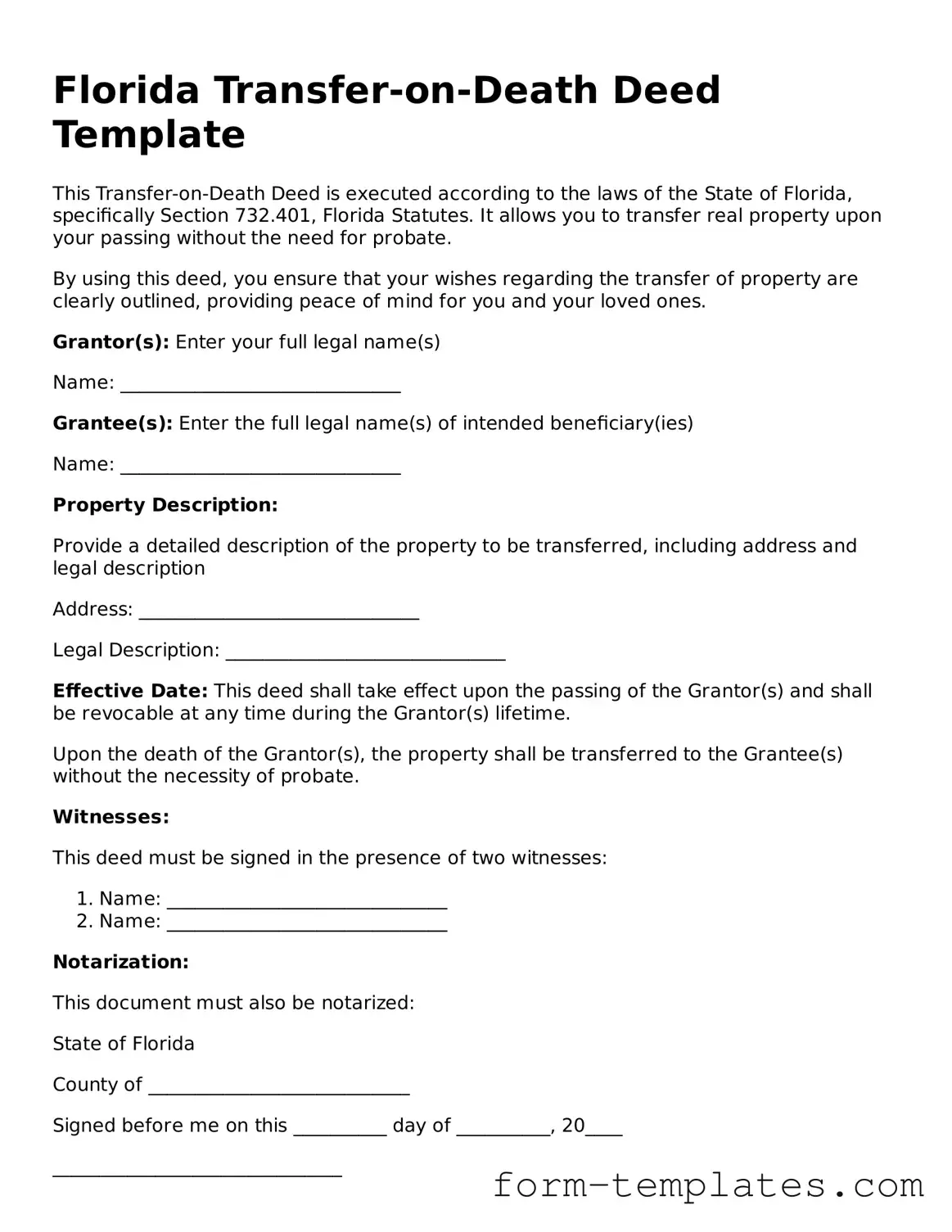Florida Transfer-on-Death Deed Template
This Transfer-on-Death Deed is executed according to the laws of the State of Florida, specifically Section 732.401, Florida Statutes. It allows you to transfer real property upon your passing without the need for probate.
By using this deed, you ensure that your wishes regarding the transfer of property are clearly outlined, providing peace of mind for you and your loved ones.
Grantor(s): Enter your full legal name(s)
Name: ______________________________
Grantee(s): Enter the full legal name(s) of intended beneficiary(ies)
Name: ______________________________
Property Description:
Provide a detailed description of the property to be transferred, including address and legal description
Address: ______________________________
Legal Description: ______________________________
Effective Date: This deed shall take effect upon the passing of the Grantor(s) and shall be revocable at any time during the Grantor(s) lifetime.
Upon the death of the Grantor(s), the property shall be transferred to the Grantee(s) without the necessity of probate.
Witnesses:
This deed must be signed in the presence of two witnesses:
- Name: ______________________________
- Name: ______________________________
Notarization:
This document must also be notarized:
State of Florida
County of ____________________________
Signed before me on this __________ day of __________, 20____
_______________________________
Notary Public Signature
_______________________________
Print Name of Notary Public
Notes:
- This deed must be recorded with the county clerk to be effective.
- Please consider consulting a legal professional to ensure your intentions are properly executed.
